Abstract
This paper reviews current knowledge of biogeochemical cycles of pollutant organic chemicals in aquatic ecosystems with a focus on coastal ecosystems. There is a bias toward discussing chemical and geochemical aspects of biogeochemical cycles and an emphasis on hydrophobic organic compounds such as polynuclear aromatic hydrocarbons, polychlorinated biphenyls, and chlorinated organic compounds used as pesticides. The complexity of mixtures of pollutant organic compounds, their various modes of entering ecosystems, and their physical chemical forms are discussed. Important factors that influence bioavailability and disposition (e.g., organism-water partitioning, uptake via food, food web transfer) are reviewed. These factors include solubilities of chemicals; partitioning of chemicals between solid surfaces, colloids, and soluble phases; variables rates of sorption, desorption; and physiological status of organism. It appears that more emphasis on considering food as a source of uptake and bioaccumulation is important in benthic and epibenthic ecosystems when sediment-associated pollutants are a significant source of input to an aquatic ecosystem. Progress with mathematical models for exposure and uptake of contaminant chemicals is discussed briefly.
Full text
PDF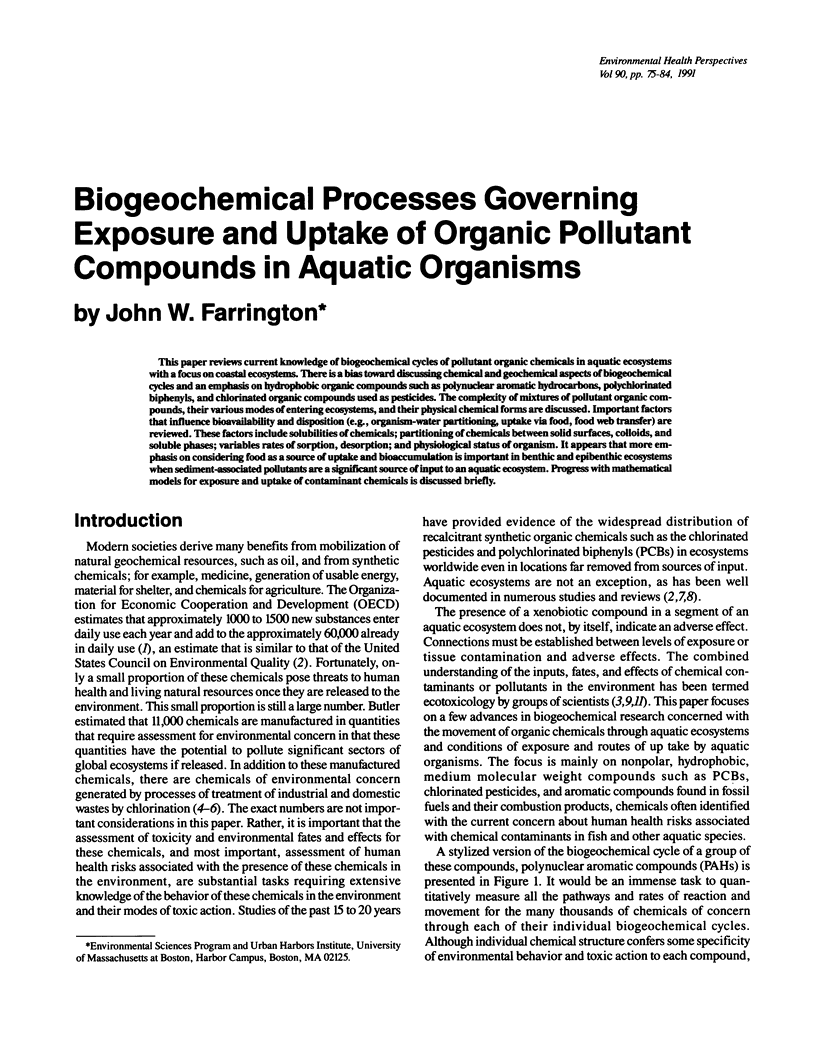
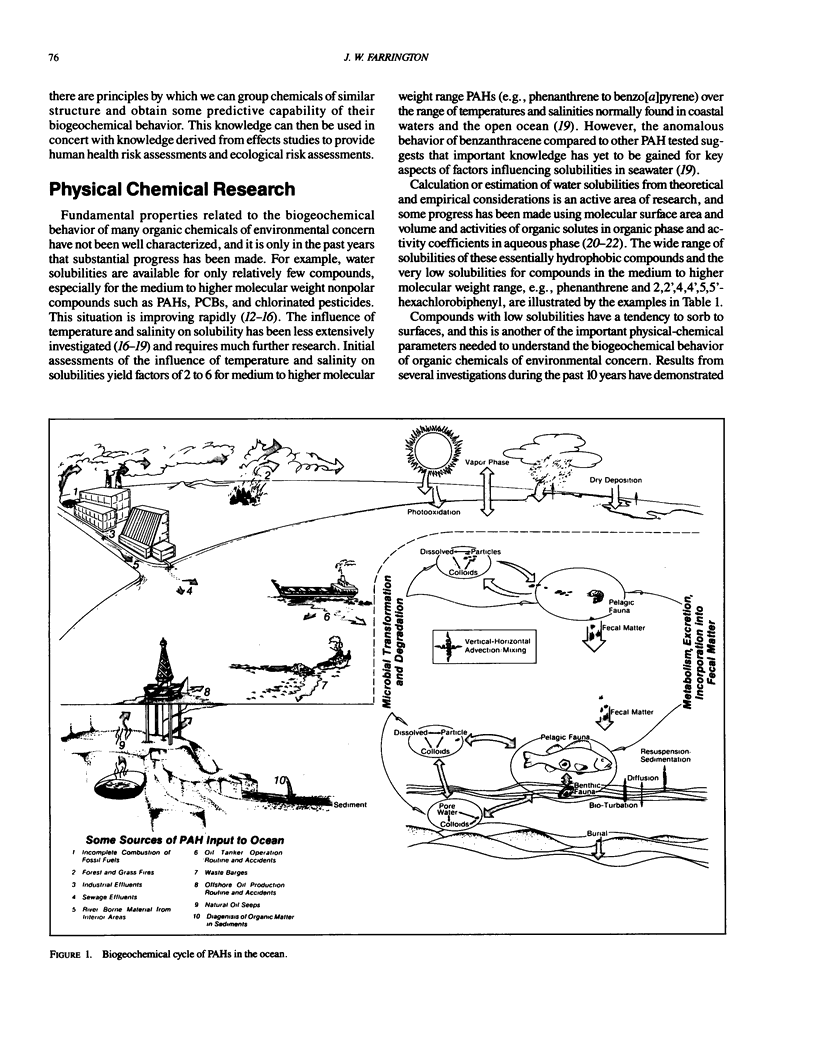
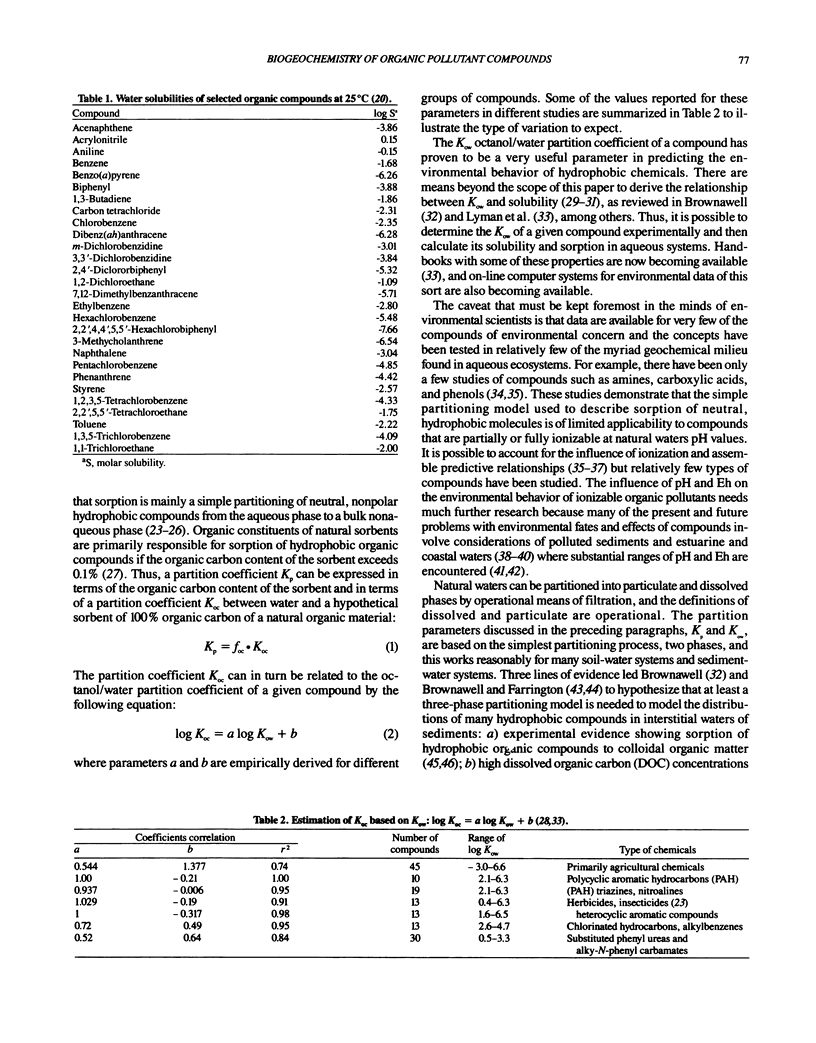
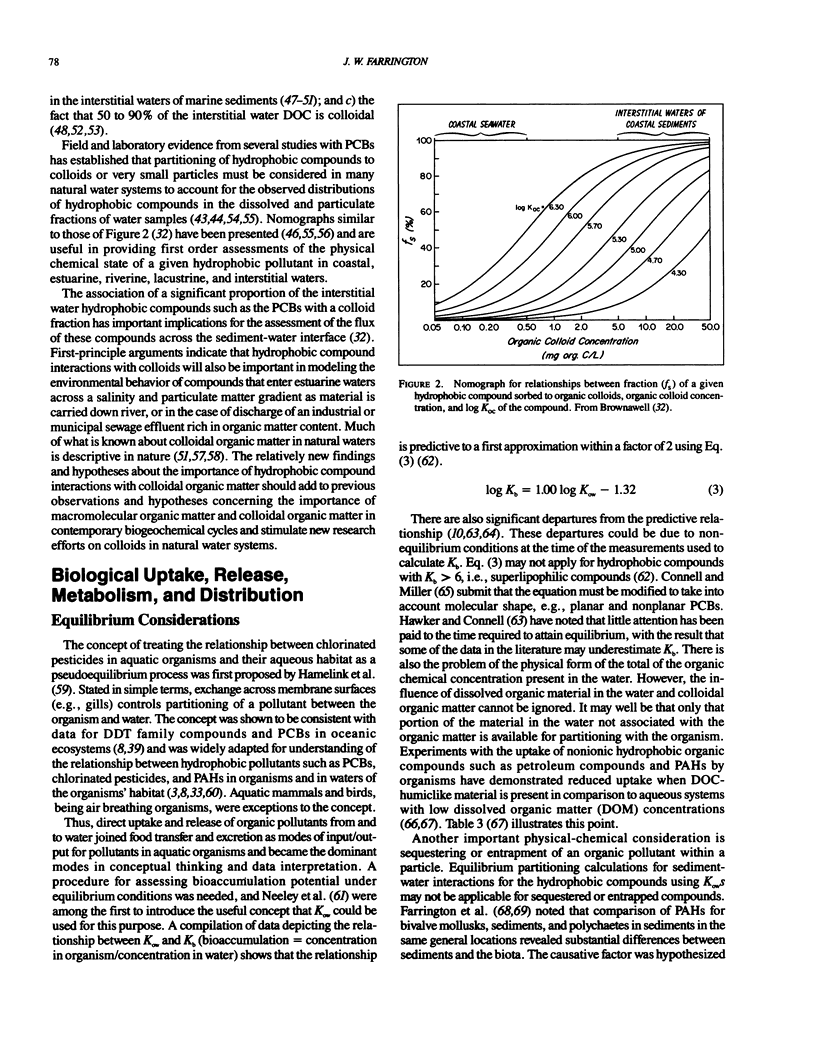
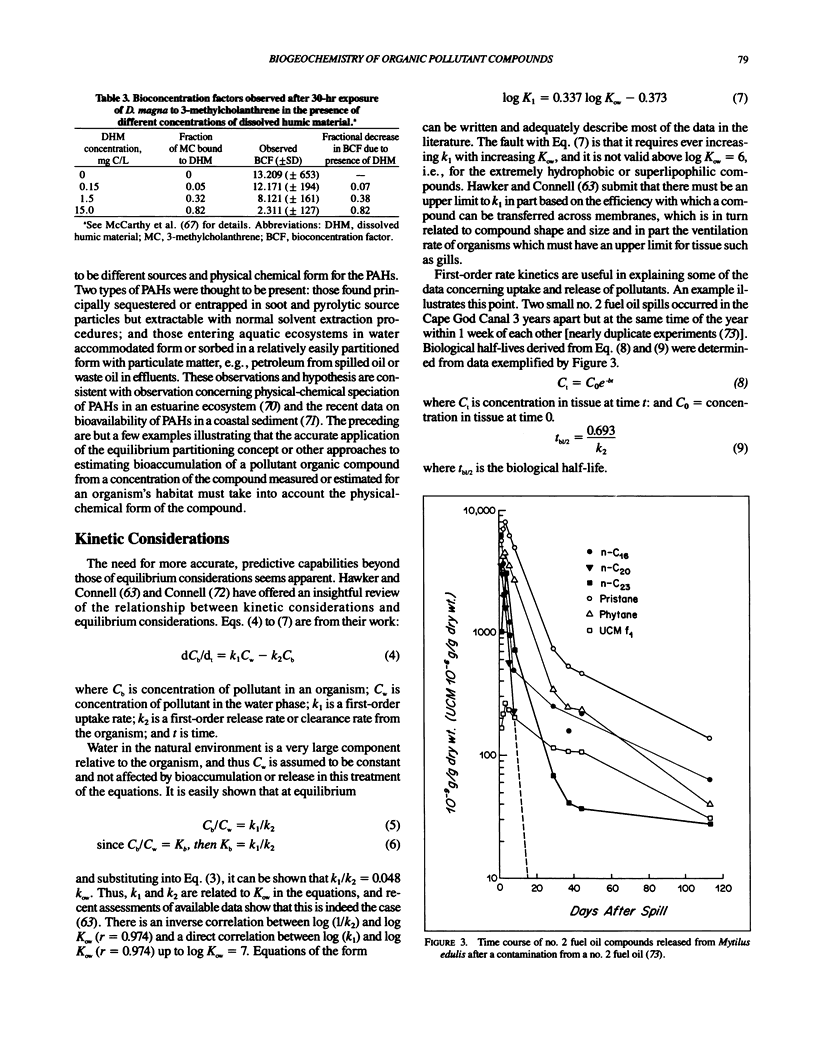
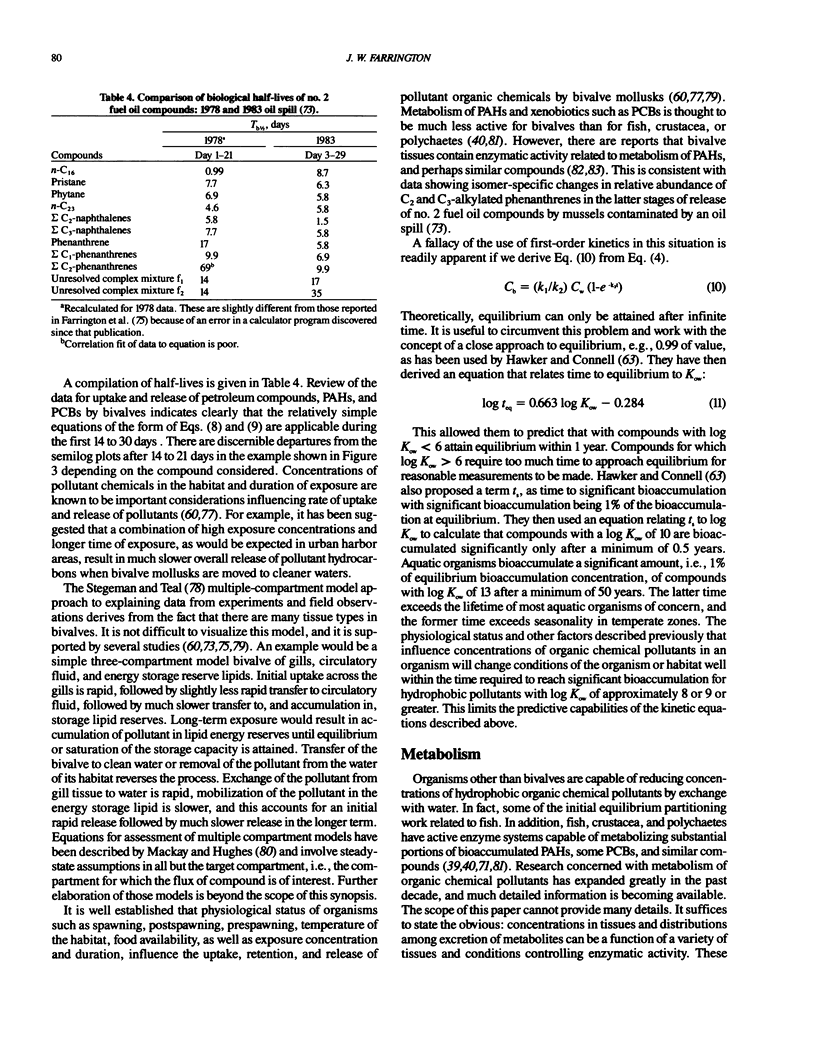
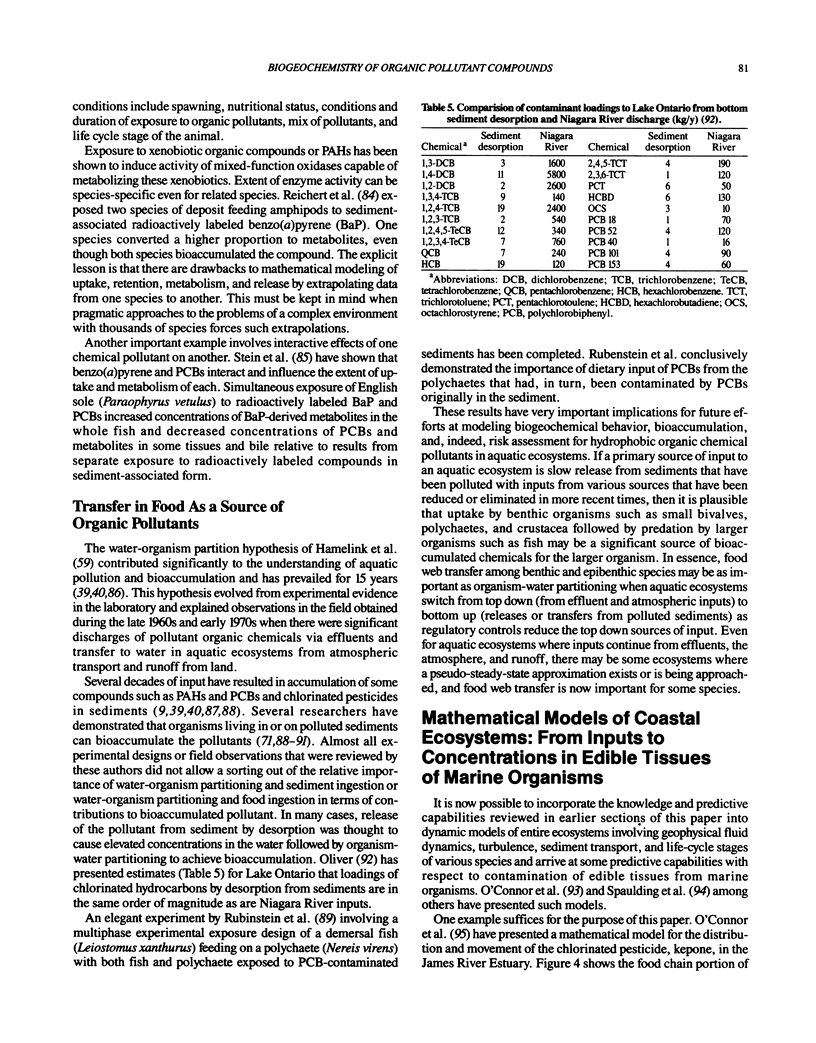
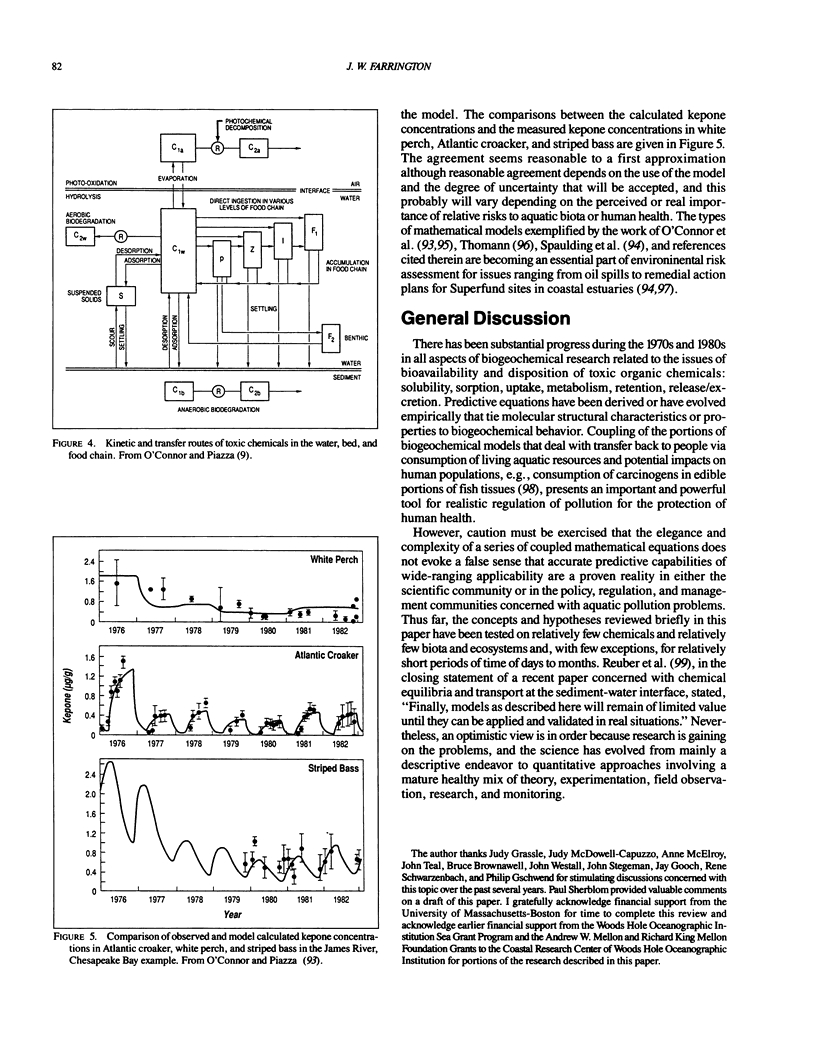
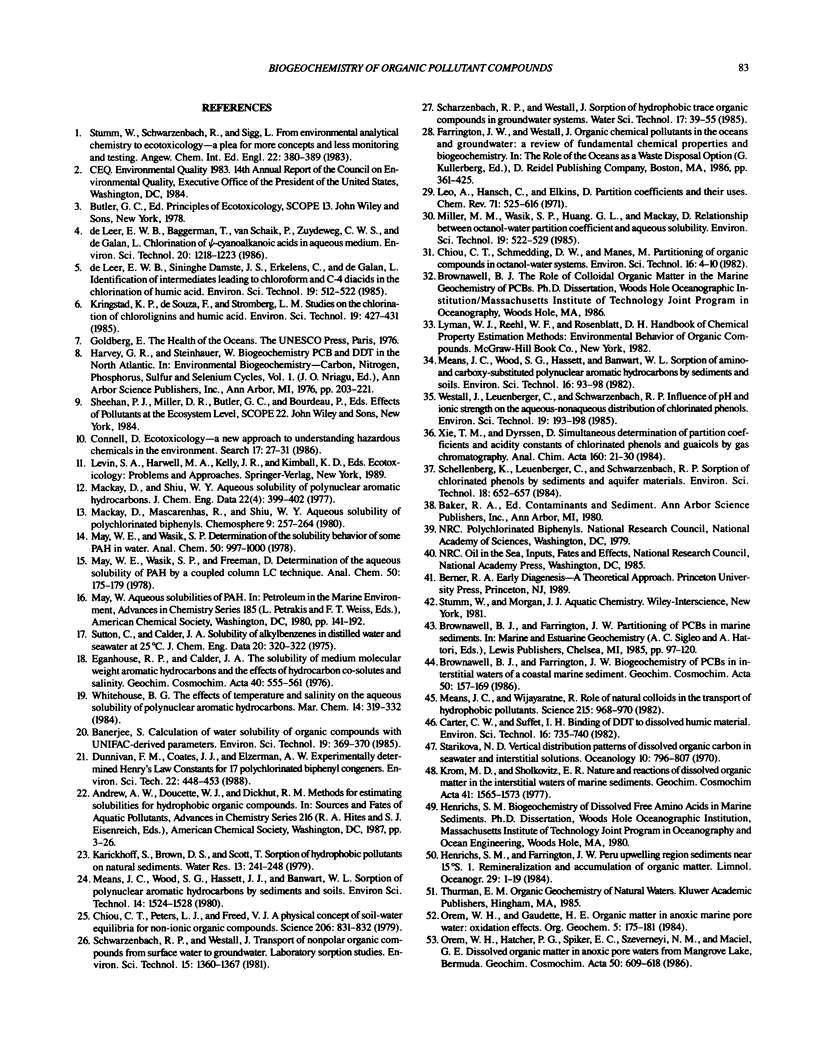
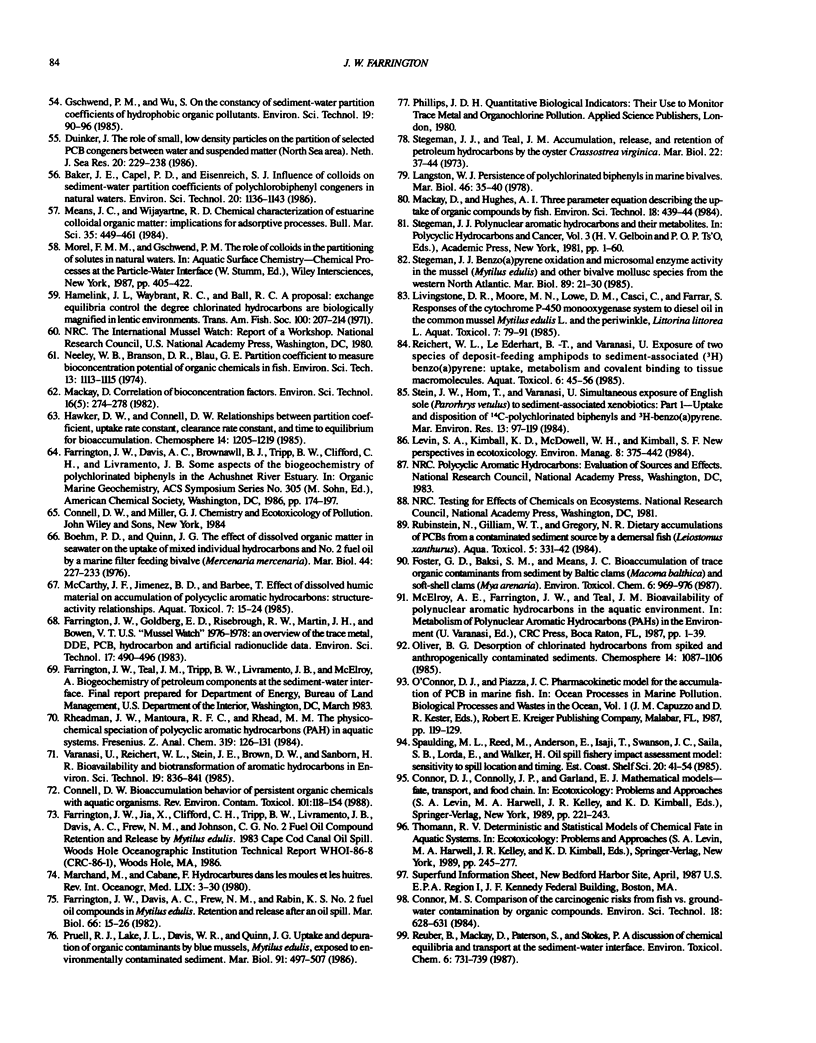
Selected References
These references are in PubMed. This may not be the complete list of references from this article.
- Chiou C. T., Peters L. J., Freed V. H. A physical concept of soil-water equilibria for nonionic organic compounds. Science. 1979 Nov 16;206(4420):831–832. doi: 10.1126/science.206.4420.831. [DOI] [PubMed] [Google Scholar]
- Connell D. W. Bioaccumulation behavior of persistent organic chemicals with aquatic organisms. Rev Environ Contam Toxicol. 1988;102:117–154. doi: 10.1007/978-1-4612-3810-2_3. [DOI] [PubMed] [Google Scholar]
- Means J. C., Wuayaratne R. Role of natural colloids in the transport of hydrophobic pollutants. Science. 1982 Feb 19;215(4535):968–970. doi: 10.1126/science.215.4535.968. [DOI] [PubMed] [Google Scholar]


